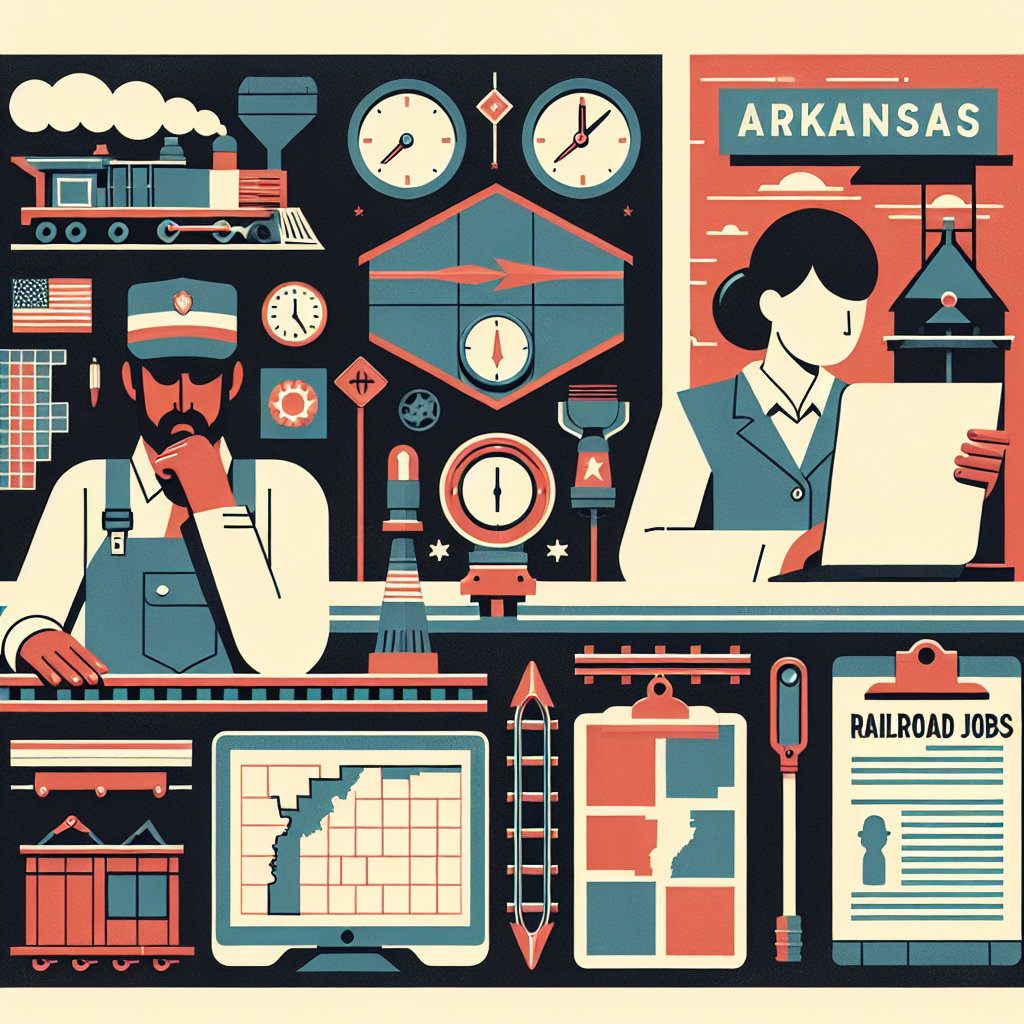Railroad Jobs In Arkansas Simplified: Easy Steps To Learn is a straightforward, practical roadmap for anyone curious about entering the railroad industry in Arkansas. Whether you’re transitioning from another trade, just out of school, or seeking a steady career with clear advancement paths, this guide breaks down the essentials — what roles exist, how to qualify, where to apply, and what to expect on the job.
Simplified Path to Railroad Careers in Arkansas
Start by understanding the common railroad occupations available in Arkansas: conductors, locomotive engineers, track maintenance crews, signal technicians, and yard operators. Each role has slightly different entry requirements and training pipelines. Many positions emphasize hands-on skills, mechanical aptitude, safety awareness, and the ability to work irregular shifts. Licensing or certification might be required for certain safety-sensitive roles.
Key entry steps
- Research job descriptions to match your strengths (mechanical, electrical, supervisory).
- Confirm minimum requirements: age, background checks, physical fitness.
- Complete required training programs or apprenticeships where applicable.
- Obtain any necessary certifications or medical clearances.
- Apply through railroad company hiring portals and targeted job boards.
Where to Find Openings and Training
Railroad employers often post opportunities on their corporate websites and on industry-specific job boards. Community colleges and technical schools in Arkansas sometimes partner with rail employers to offer certificates or short-term training for track maintenance, signal work, or diesel mechanics. If you’re a college student or recent graduate looking for entry-level roles and internships, check targeted resources like the guide to job boards for college students in the USA — free and paid options for ideas on where to list your resume and find student-friendly postings.
Apprenticeships and on-the-job training
Many railroads hire entry-level candidates into training programs that combine classroom learning with supervised fieldwork. These programs teach practical skills such as rail inspection, equipment operation, signaling basics, and safety protocols. Ask local employers about sponsorships or registered apprenticeship programs — they give paid experience and often lead directly to full-time positions.
Certifications, Licenses, and Safety
Safety is paramount on railroads. Expect pre-employment drug tests, background checks, and medical exams. Certain roles require federal or company-specific certifications. For locomotive engineers and other regulated positions, formal training programs and testing are common. To understand the broader occupational outlook and typical duties for locomotive engineers and other railroad workers, consult the Bureau of Labor Statistics overview for these roles, which provides occupational data, wage ranges, and job outlook information: BLS overview of locomotive engineers and railroad workers.
Practical Tips for Applying
Tailor your resume to emphasize relevant hands-on experience, safety training, and any heavy-equipment or mechanical work. Include details like certifications, completed training hours, and examples of teamwork under challenging conditions. Networking matters — attend local job fairs, engage with vocational school career services, and connect with railroad employees on professional platforms to learn about openings before they’re posted publicly.
Interview and hiring advice
- Be prepared to discuss safety scenarios and how you would respond.
- Bring documentation of certifications, driver’s license, and any medical clearances.
- Show willingness to work flexible schedules and travel if required.
- Ask clear questions about training timelines, advancement, and shift patterns.
Advancement and Long-Term Outlook
Entry-level roles can lead to advanced technical or supervisory positions with experience and additional training. Common progression paths include moving from track maintenance to supervisory roles, becoming a certified technician, or transferring into signaling and communications specialties. Union membership is common in many railroad jobs and can influence pay scales, benefits, and promotion processes.
Local considerations for Arkansas
Arkansas’s rail network supports freight and industrial operations, so opportunities often align with freight logistics, manufacturing deliveries, and regional distribution centers. Look for employers operating mainline freight routes, short-line railroads serving local industries, and companies providing rail support services. Local workforce development centers can provide up-to-date listings of employer needs and training grants.
Quick Checklist
- Identify a target role and review its qualifications.
- Complete any required training or apprenticeship enrollment.
- Prepare a safety-focused resume and documentation packet.
- Apply through employer portals, targeted job boards, and local career centers.
- Follow up, network, and be prepared for testing and physical exams.
FAQ
Q: How long does it take to get hired into a railroad job in Arkansas?
A: Hiring timelines vary by role and employer. Some entry-level maintenance positions can start within weeks after training and clearance, while certified roles like engineers often require months of formal training and testing.
Q: Do I need prior experience to start in the railroad industry?
A: Not always. Many employers offer entry-level programs that teach on-the-job skills. Prior experience in construction, mechanics, or heavy equipment operation is beneficial and can speed up advancement.



